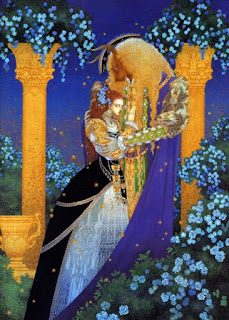It would be glib to say The Shape of Water is like Beauty and the Beast meets The Creature From the Black Lagoon. It would be accurate, but it doesn't suggest the profound emotional pull and dramatic resonance of this bewitching new movie from Guillermo del Toro.
The master craftsman behind the amazing Pan's Labyrinth, Del Toro's career has taken some oddball turns since then, but he's back in top form with this evocative modern fairy-tale.
Co-scripted by Del Toro and Vanessa Taylor, the story begins at a secret government facility in Baltimore, ca 1962 — at the height of the Spy-vs-Spy tensions of the Cold War. Elisa (Sally Hawkins), and her friend, Zelda (Octavia Spencer), are maids, cleaning up the research labs.
An orphan, whose damaged vocal cords render her unable to speak, Elisa lives an orderly, solitary life in an apartment above a once-grand movie theater. Her only other friend, Giles (Richard Jenkins), down the hall, is a lonely, middle-aged gay artist whose magazine illustrations are going out of style.
 |
| Hawkins & Jones: Liquid Asset |
The staff is warned to keep their distance, but Elisa can't help peeking into the tank to find that what everyone refers to as "The Asset" is a man-sized, reptilian, aquatic creature with scales, webbed digits, and gills, captured from the jungles of South America — where "the natives consider him a god."
The scientists, however, are only interested in his dual breathing mechanisms (both water and air), which they plan to study for military purposes. But Elisa soon discovers he's a sentient being, able to communicate. It's agonizing enough whenever sadistic Strickland shows up with a cattle-prod to show "The Asset" who's boss. But when Elisa hears they plan to dissect him, she goes into action.
 |
| Hawkins & Jenkins: Allies for love |
In small deft strokes, theirs becomes one of the most compelling, fanciful, and satisfying love stories you'll see onscreen all year. As Elisa signs to Giles, "He doesn't see how I am incomplete." They recognize in each other something everyone else is missing.
 |
| Loud and clear: Elisa has a message for male authority |
The range of subtle sound effects by which the character communicates are brilliantly done, but it's Jones' soulful, expressive presence that gives the movie its heart.
 |
| Inspiration: the original "Amphibian Man" |
Jenkins is also terrific as wry observer Giles; hopelessly crushed on the guy who serves pie at the diner, he becomes Elisa's staunchest ally. And Del Toro's sheer joy of filmmaking is contagious, from precision chase scenes, and glimpses of period TV shows like Mr. Ed and Dobie Gillis, cannily chosen to inform the story, to his gleeful homage to vintage Hollywood musicals in a nutty but irresistible fantasy dance routine shot in black-and-white, a la Fred and Ginger.
Cat lovers (like me) will find one incident distressing, but even that makes a valid point about letting what's wild stay wild. Overall, this offbeat love story could not be more timely, or effective.
It celebrates diversity with a "disabled" heroine, a woman of color, and a gay man teaming up to thwart the evil schemes of a government of monsters. It's about a woman who defies the perception that she is powerless against condescending male authority. It rebukes stark political and scientific agendas without compassion. And it stands up for the unalienable right to fall in love — period.












































